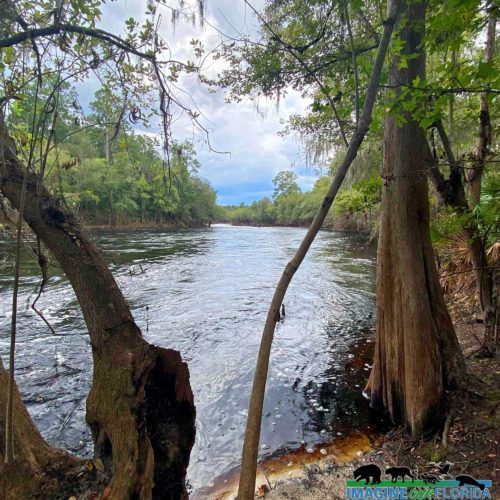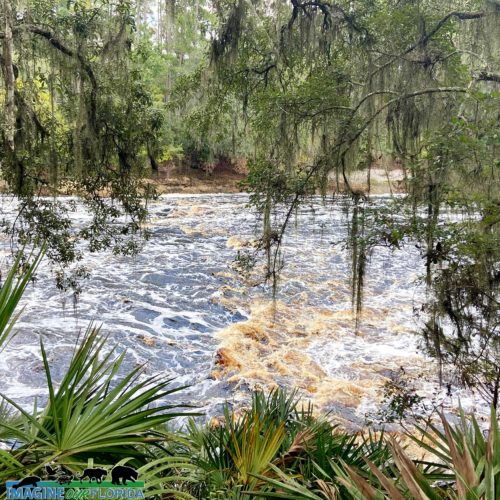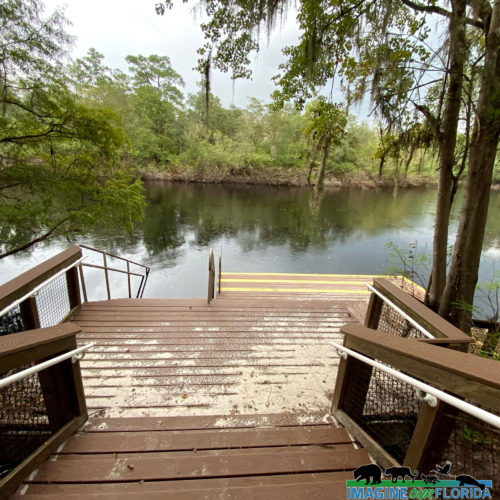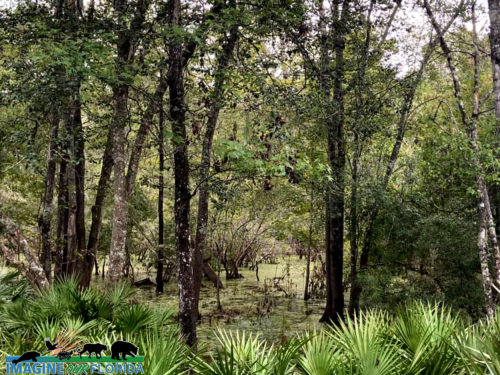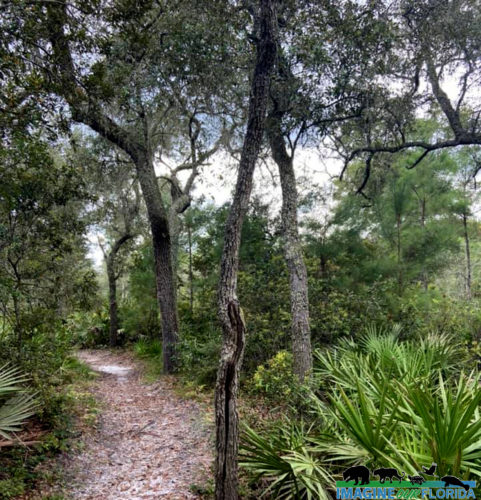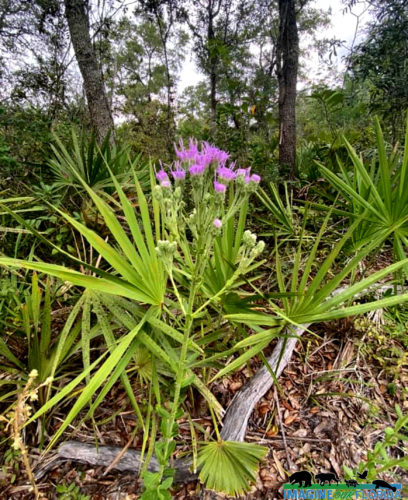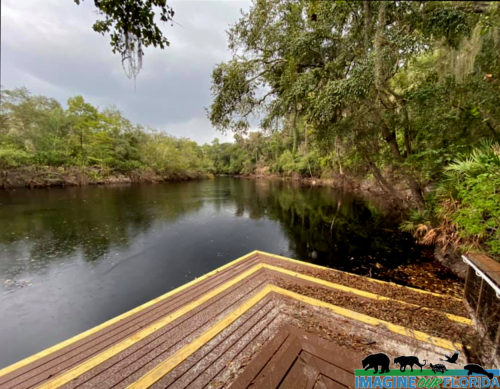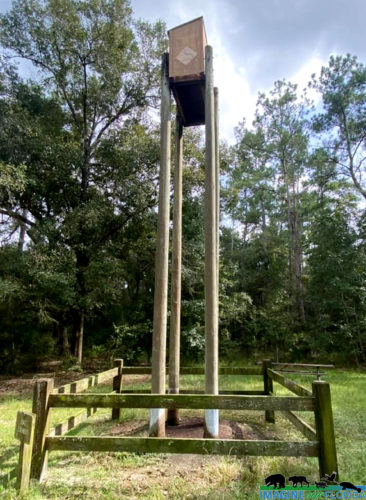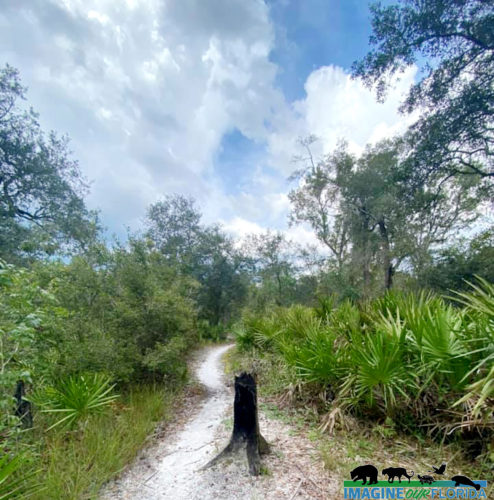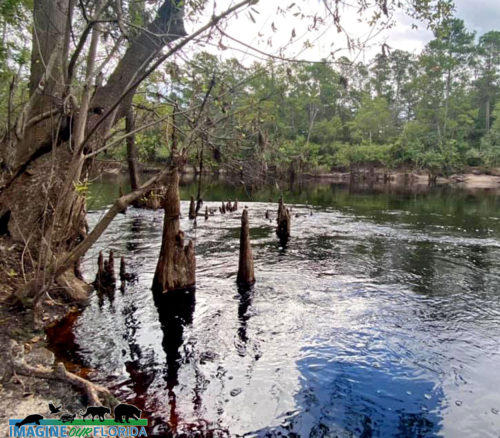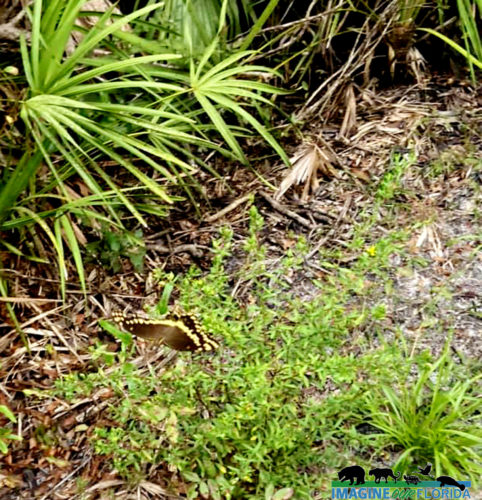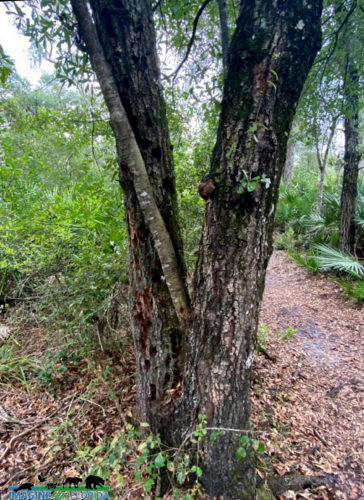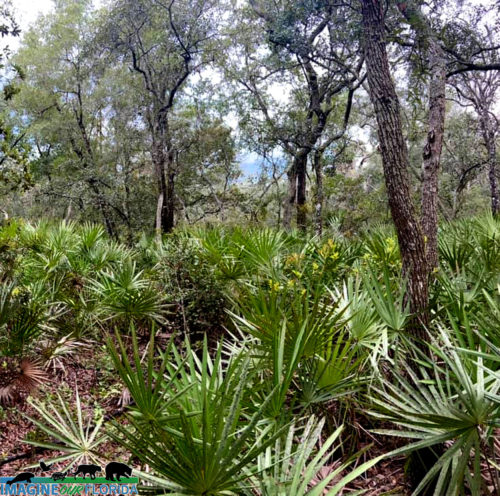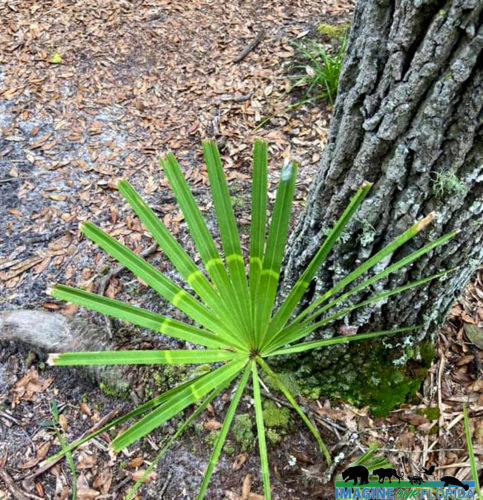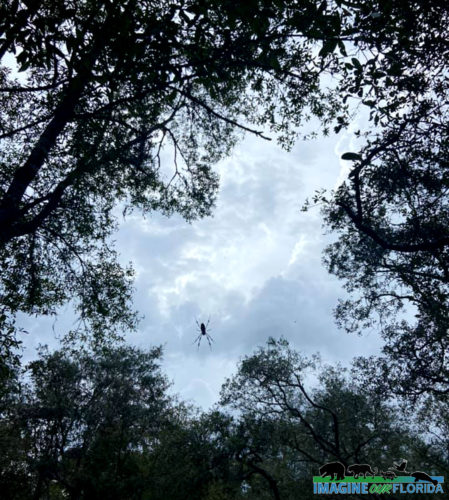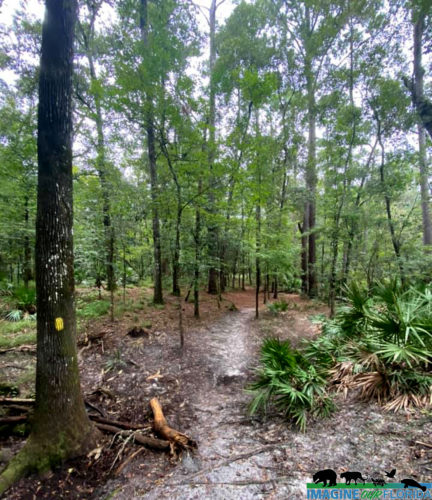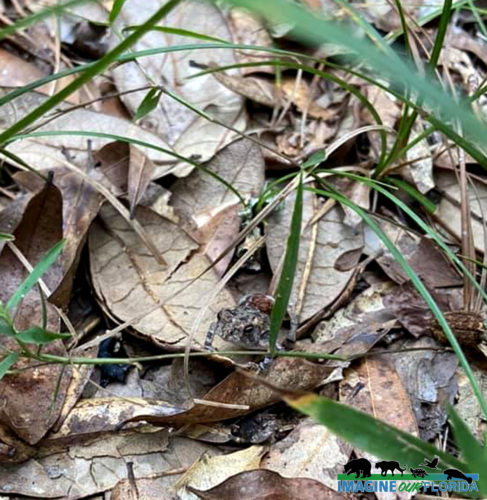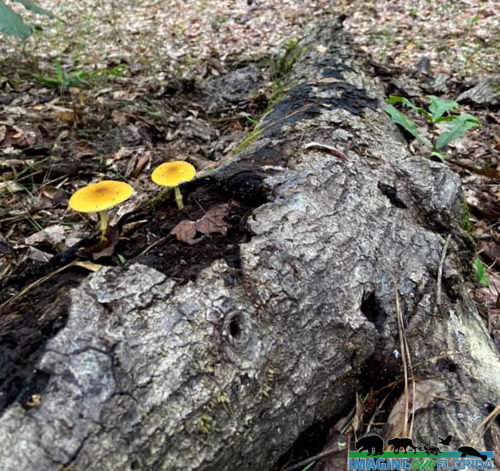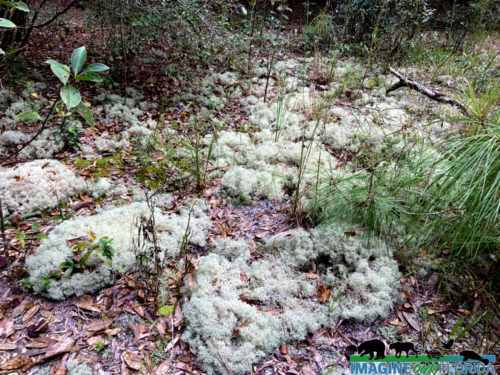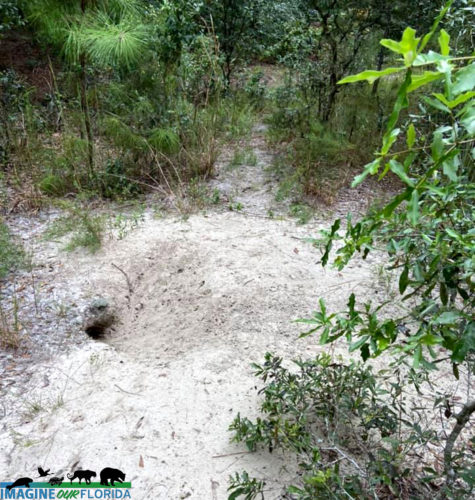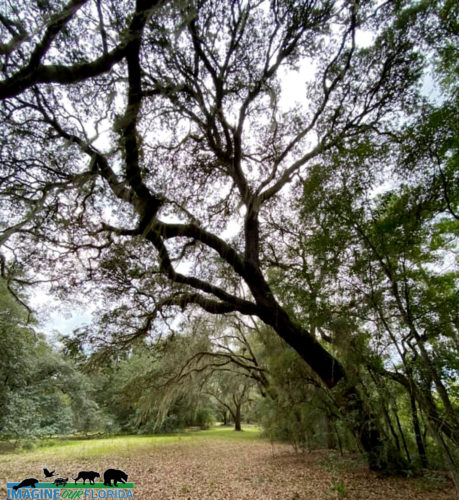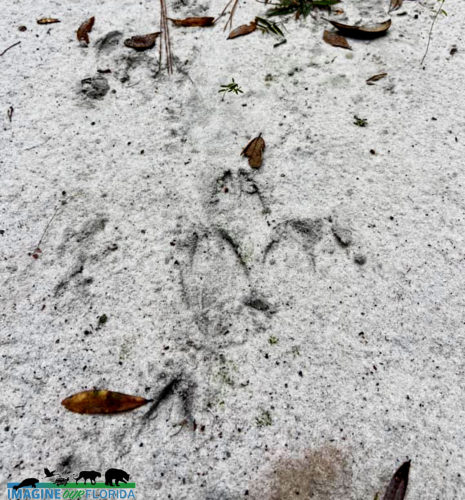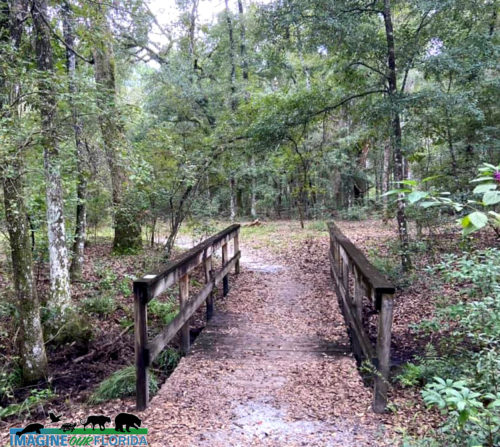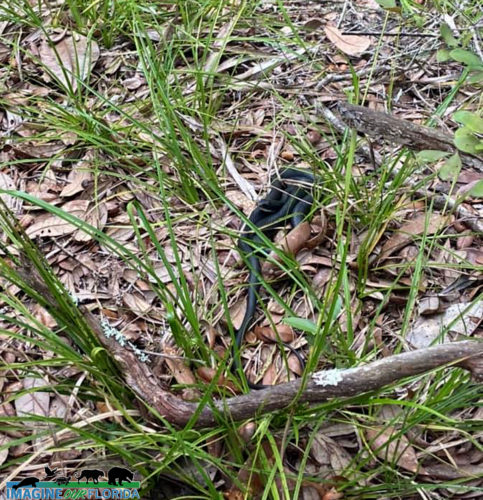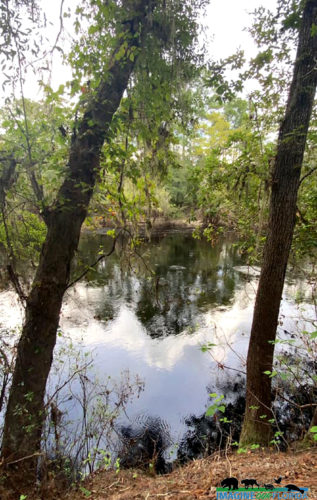Big Shoals State Park boasts the only whitewater Class III rapids in Florida. Located In White Springs on S.E. County Road 135 in Hamilton County, this state park has a canoe and kayak launch on the shore of the blackwater Suwannee River. The upper portion of the river provides a year-round opportunity for paddlers. The water level which varies throughout the year determines if the shoals are safe to pass through. The Class III rapids occur when the Suwanne reaches 59-61 feet above mean sea level.
Apalachee and Timucuan lived in the Big Shoals where they used limestone from a quarry to make tools essential for survival. In the early 1800s, European settlers forced most Native Americans out of Big Shoals. Throughout the years, the area was home to a scrub cattle ranch, a black seed cotton farm, and was later used for logging and turpentining. Today, you can still see the scars on the bark of Longleaf pines from catstripping to reach the turpentine. Later the White Springs hotel and bathhouse were built for guests to take advantage of White Springs which was first cherished by Native Americans for their healing properties. The springs dried up in 1990.
Between 1986 and 1989, land including Big Shoals was purchased through a joint agreement between the state of Florida, the Suwannee River Water Management District, and the Florida Fish and Wildlife Conservation Commission. Today, Big Shoals State Park is part of the Great Florida Birding Trail.
Big Shoals State Park has 28 miles of trails waiting to be explored. Hike, bike, or horseback ride while discovering the wildlife and wild plants that thrive there. Trails include a mountain bike trail and the 3.4-mile-long Woodpecker Trail which is a multipurpose paved trail. Be sure to hike the mile-long shaded Big Shoals Trail. The trail will lead you through the forest to limestone bluffs 80 feet above the Suwannee River. Enjoy the breath-taking view of the Big Shoals as the Suwannee rushes over agatized corals and limestone.
Bring your camera and/or binoculars. Look for greenfly orchids and magnolia trees. Watch for Swallow-tailed kites, bald eagles, and hawks soaring overhead. Wood ducks, herons, egrets, and other wading birds visit or make their homes near the water. Listen for owls and a diverse assortment of songbirds.
Bring your dinner and enjoy it at the picnic pavilion. Pets on a 6-foot leash are welcome.
Be sure to stay until sunset to see hundreds of Mexican free-tailed bats fly out of the bat house.
For more information click here: https://www.floridastateparks.org/…/big-shoals-state-park

